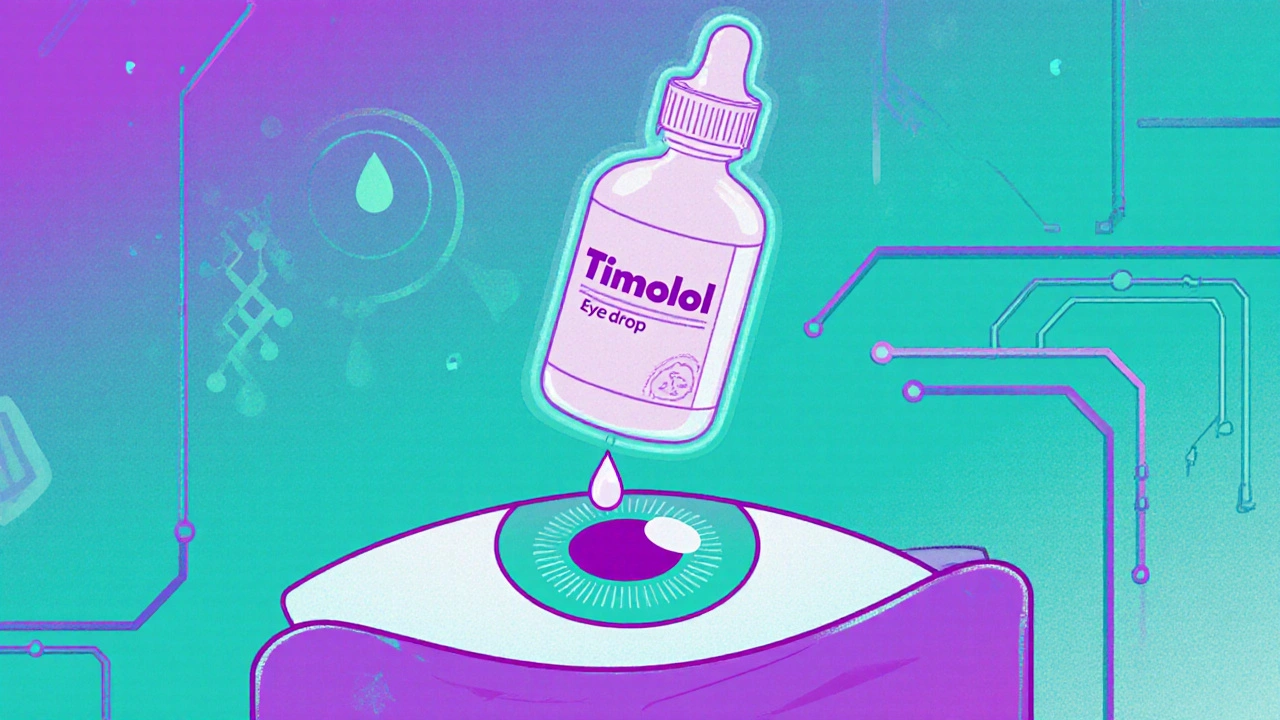
IOP Monitoring Tool
Log New IOP Reading
Current Status
This tool helps monitor your intraocular pressure during Timolol tapering. According to your doctor's plan, you should not exceed your target IOP by more than 2-3 mmHg.
IOP Log
| Date | Time | Measured IOP | Target IOP | Status |
|---|
You've been using Timolol eye drops for a while, but now you need to stop. Dropping a glaucoma medication without a plan can spike eye pressure and threaten vision. This guide walks you through why a careful taper matters and exactly how to do it, so you can protect your sight while easing off the drops.
What is Timolol and How Does It Work?
Timolol is a non‑selective beta‑blocker formulated as eye drops that lowers intraocular pressure (IOP) by reducing aqueous humor production. It’s been a first‑line treatment for open‑angle glaucoma and ocular hypertension since the 1970s.
Because high IOP can damage the optic nerve over time, Timolol helps keep the pressure in a safe range, slowing visual field loss.
Why Stopping Timolol Abruptly Can Be Risky
If you quit Timolol cold turkey, the eye can experience a rebound rise in IOP-sometimes higher than before treatment began. This rebound can happen within days and may lead to sudden vision blurring, eye pain, or even permanent optic nerve damage.
Other side effects, such as systemic beta‑blocker symptoms (slow heart rate, fatigue), often improve after stopping, but the ocular risk is the primary concern.
When Is It Safe to Consider Discontinuation?
- IOP has been consistently stable at target levels for at least 12 months.
- Side effects (dry eye, bronchospasm, bradycardia) outweigh benefits.
- Patient is pregnant, planning surgery, or switching to a different class of medication.
- Regular follow‑up with an Ophthalmologist is assured.
If any of these apply, discuss a taper plan with your eye doctor before making changes.
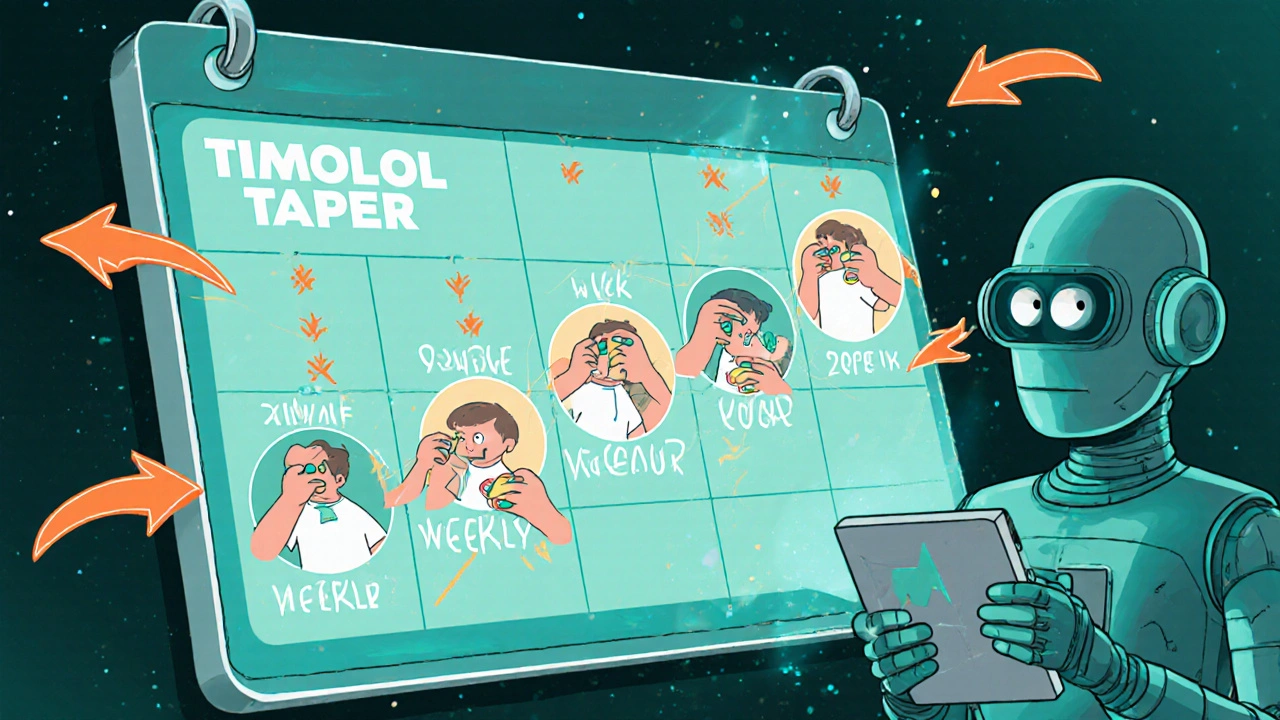
Step‑by‑Step Tapering Protocol
- Week 1-2: Reduce Frequency - Cut back from twice daily to once daily (preferably in the morning).
- Week 3-4: Alternate Days - Use the drop every other day. Keep a log of the days you apply it.
- Week 5-6: Every Third Day - Apply the drop once every three days. Monitor for any eye discomfort.
- Week 7+: Discontinue - Stop using Timolol entirely. Continue regular IOP checks for at least three months.
During each phase, schedule an IOP check with your Ophthalmologist or optometrist. If pressure climbs more than 2‑3 mmHg above target, pause the taper and reassess.
Monitoring While You Taper
Key parameters to watch:
- Intraocular pressure (IOP) - measured with tonometry at each visit.
- Visual field testing - ensures no new blind spots develop.
- Optic nerve imaging (OCT) - checks for subtle changes in nerve thickness.
Maintain a simple diary: date, time of drop, IOP reading, and any symptoms (headache, eye redness, blurred vision). This record helps your doctor spot patterns early.
Alternative Medications After Stopping Timolol
If you need ongoing pressure control, several other drug classes work well and may have fewer systemic effects.
| Medication | Class | Typical Dosing | Key Benefits | Common Side Effects |
|---|---|---|---|---|
| Latanoprost | Prostaglandin analog | Once daily (evening) | Strong IOP reduction, once‑daily dosing | Darkened iris, mild eye irritation |
| Brimonidine | Alpha‑2 agonist | Twice daily | Low systemic absorption, useful in combination therapy | Dry mouth, fatigue |
| Brinzolamide | Carbonic anhydrase inhibitor | Twice daily | Works well with prostaglandins, minimal systemic effects | Metallic taste, occasional stinging |
Discuss these options with your eye doctor. Many patients switch to a prostaglandin analog like Latanoprost because it offers robust pressure control with once‑daily dosing.
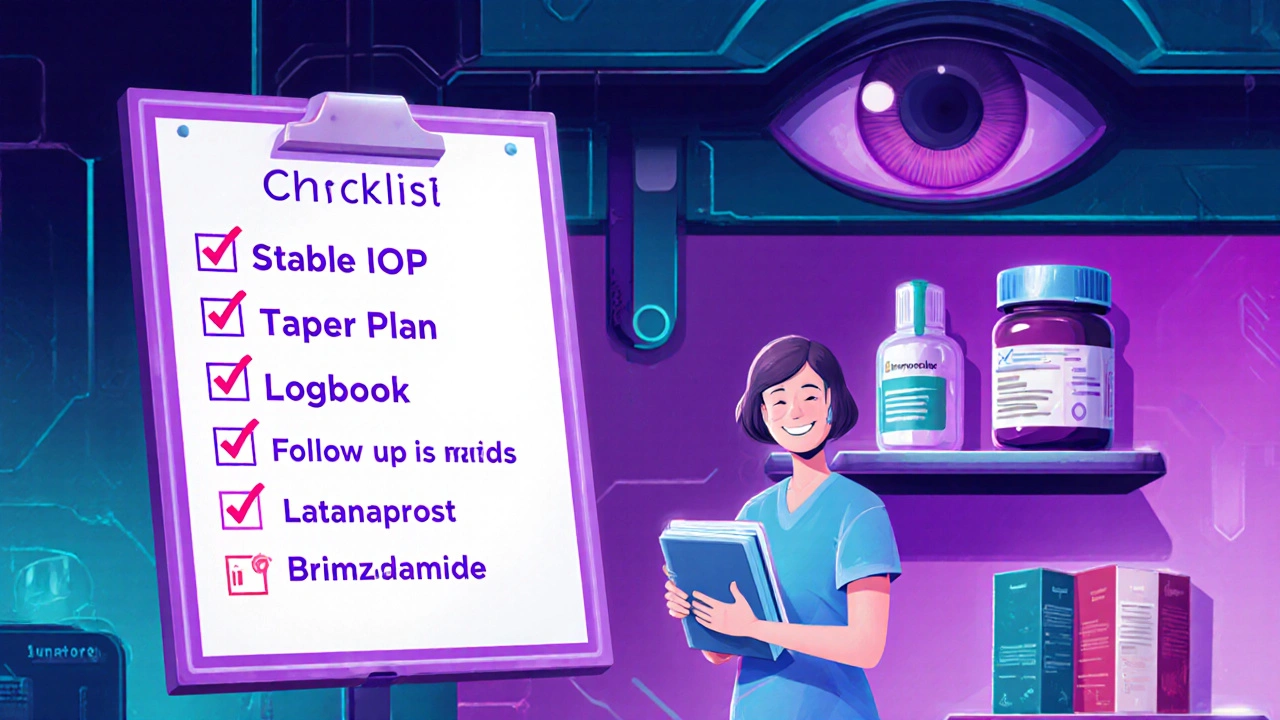
Common Pitfalls to Avoid
- Skipping IOP checks - even mild pressure spikes can be damaging.
- Stopping without a taper - rebound IOP often exceeds baseline.
- Self‑adjusting the schedule - always follow the doctor‑approved timeline.
- Ignoring systemic symptoms - if you feel unusually tired or short of breath, let your doctor know.
Quick Checklist for a Safe Stop
- Confirm stable IOP for ≥12 months.
- Schedule a taper plan with your ophthalmologist.
- Log each drop application and IOP reading.
- Attend all follow‑up appointments (minimum three months after stop).
- Discuss alternative meds if long‑term pressure control is needed.
Frequently Asked Questions
Can I stop Timolol suddenly if I forget a dose?
Missing a single dose isn’t usually dangerous, but you should resume the regular schedule as soon as possible. A sudden, complete stop without a taper can cause rebound IOP.
How long does the rebound effect last?
Rebound IOP can appear within days and may persist for several weeks if the taper is too rapid. Monitoring for at least three months after full discontinuation is recommended.
Are there any home‑based ways to check my pressure?
Home tonometers exist but are pricey and require proper training. For most patients, clinic checks remain the gold standard.
What if I experience dry eye after stopping Timolol?
Dry eye is a common complaint with many glaucoma drops. Artificial tears, preservative‑free formulations, or switching to a different class can help.
Is it safe to use over‑the‑counter eye drops while tapering?
Most OTC lubricants are fine, but avoid those containing preservatives that can irritate the cornea. Always ask your ophthalmologist before adding any new eye product.
Stopping Timolol doesn’t have to be scary. With a doctor‑guided taper, regular monitoring, and a solid backup plan, you can keep your eyes healthy while moving on from the medication.
Dante Russello
First of all, congratulations on taking the initiative to manage your glaucoma responsibly, because a well‑planned taper can make all the difference, not just for your eyes but for your peace of mind. The guide you shared highlights the importance of a gradual reduction, which aligns perfectly with what most ophthalmologists recommend, especially after a year of stable IOP. Remember, the rebound effect isn’t just a myth; it’s documented in several studies, and it can spike pressure within days if you stop cold turkey. By cutting the dose in half during the first two weeks, you give your eye’s aqueous humor production a chance to adjust, reducing the shock to the system. Logging each dose, as suggested, is a habit that pays dividends, because patterns emerge that can be missed otherwise. Don’t forget to schedule tonometry appointments before you start, then again at the end of each taper phase, to catch any subtle rises early. If you notice a 2‑3 mmHg increase, pause the taper – that’s a signal your eye is telling you to slow down. It’s also wise to discuss alternative medications now, rather than waiting until the end, because a smooth transition can prevent gaps in pressure control. Many patients find prostaglandin analogs like latanoprost convenient, with once‑daily dosing and strong efficacy, but they do have side effects such as iris darkening that you should weigh. Keep an eye (pun intended) on dry‑eye symptoms; if they become bothersome, preservative‑free artificial tears can provide relief without compromising the taper. In case you experience systemic symptoms like fatigue or a slower heartbeat, note them immediately and let your doctor know – beta‑blockers can affect more than just the eye. Finally, celebrate each small milestone; moving from twice daily to once daily, then to every other day, is progress, and staying consistent will help you protect your vision for years to come.
Scott Ring
Great rundown! I love how the guide breaks down each week step‑by‑step, making it easy to follow without feeling overwhelmed. It’s especially helpful to have the checklist at the end – ticking those boxes really keeps you on track. Just a heads‑up: if you’re traveling, try to sync your taper schedule with your local pharmacy hours so you don’t miss a dose. Also, keep a backup bottle handy in case you drop the main one. Stay chill and keep those follow‑up appointments, and you’ll do fine.
Shubhi Sahni
Thanks for sharing this thorough protocol, it’s exactly the kind of comprehensive resource patients need, especially when they’re nervous about stopping a long‑term medication. The emphasis on regular IOP checks cannot be overstated, because early detection of a rebound can prevent permanent damage, and the log‑keeping suggestion is a practical way to involve patients in their own care. I’d add that discussing any systemic issues, like asthma or bradycardia, with your ophthalmologist before starting the taper can further tailor the plan to your personal health profile, ensuring safety throughout the process.
Danielle St. Marie
Wow, this guide is… kinda basic, lol 🤦♀️. If you’re really serious about eye health, you’d already know that you can’t just pull the plug on Timolol without a detailed, doctor‑approved plan – it’s not a DIY hobby. Also, the table of alternatives is oversimplified; not every patient can handle prostaglandins, and some of those side effects are non‑negotiable. 🙄 Stick to the evidence‑based taper and stop looking for shortcuts.
Jinny Shin
Oh, the drama of stopping eye drops! I can almost hear the ominous ticking of the pressure gauge as you skip a dose. Yet, with patience and a structured plan, the fear fades like a distant thunderstorm.
deepak tanwar
While the outlined taper appears sound, one must consider the underlying physiological mechanisms that may render a uniform schedule suboptimal for certain patients. It would be prudent to evaluate baseline aqueous humor dynamics before initiating any reduction, thereby ensuring that the taper does not inadvertently exacerbate intraocular pressure variability. Moreover, the reliance on office‑based tonometry alone may overlook diurnal fluctuations, suggesting the inclusion of home‑monitoring devices where feasible. Finally, the protocol could benefit from a contingency clause addressing unexpected systemic side effects, which, though rare, merit pre‑emptive discussion.
Abhishek Kumar
This looks fine.
hema khatri
Great job on the guide! It’s super helpful, especially the step‑by‑step taper, and the checklist makes it easy to stay on track. Just remember to keep those follow‑ups, and you’ll protect your eyes, trust me! 👍
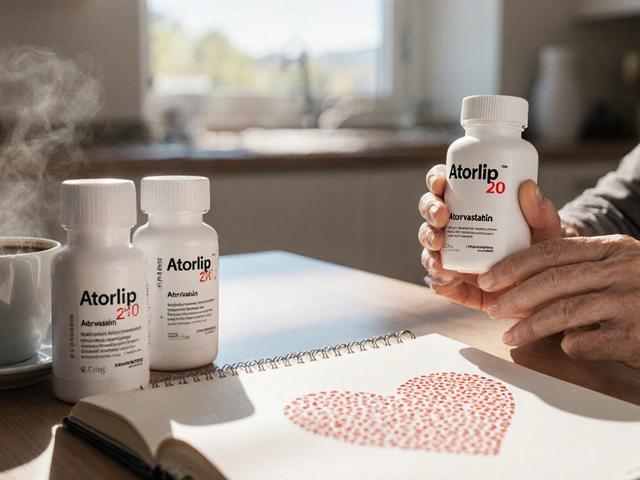

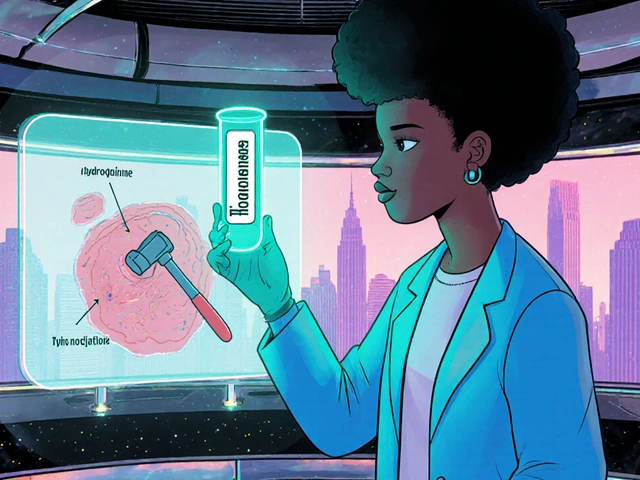
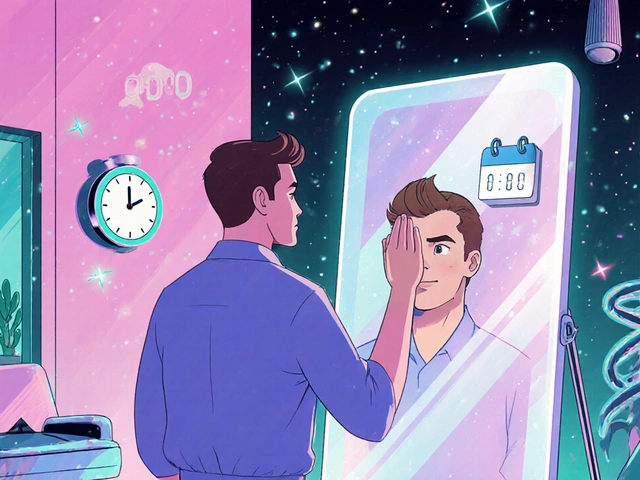
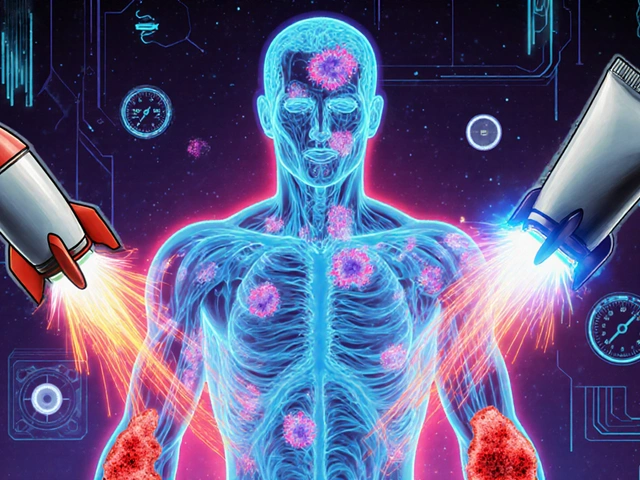
Write a comment